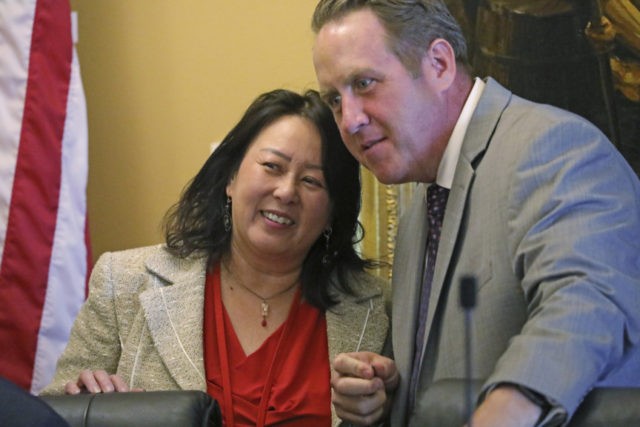SALT LAKE CITY (AP) — Nearly two dozen states are spending millions of dollars to make sure people participate in the 2020 Census amid concerns that undercounting could mean losing critical federal funding or seats in Congress.
Utah became the latest on Monday as its GOP-dominated Legislature voted to spend $1 million on outreach for the census, a first for the state that’s one of the youngest and fastest-growing in the country.
Its varied population includes big families with The Church of Jesus Christ of Latter-day Saints, a growing number of immigrants, and Native Americans on remote reservations.
Utah has added an estimated half-million people since the previous census in 2010, but the number of census workers knocking on doors there is expected to shrink by half, Democratic state Rep. Karen Kwan said.
“It’s a bipartisan issue. It’s not one side or the other saying it’s important,” she said. “This is the time to do it right.”
Funding and representation concerns are on the minds of many state leaders around the country. In California, for example, a think tank has estimated a 4% undercount could lead to the loss of a House seat. In New Mexico, the governor has warned a 1% percent inaccuracy could translate into more than $700 million in lost federal revenue over a decade.
States spending the most money are largely led by Democrats and include Illinois, New York and California, which is spending the most at $187 million, according to data provided by the National Conference of State Legislatures.
Conservative-leaning states such as Georgia, Alabama and North Dakota have also allocated funding.
While the count itself will be run by the federal government, state-run outreach efforts are expected to include things such as public service messages, fliers in the mail, home visits and gatherings.
In Utah, half of the money allocated by the Legislature will be spent for programs aimed at tallying groups that are historically undercounted, including a relatively large population of children under 5.
Another undercount there could have a major impact on federal funding for things such as school lunches and after-school programming, said Ze Min Xiao, director of the Salt Lake County Office for New Americans, which is leading census outreach in Salt Lake County.
County leaders are also spending money to reach immigrants who may still have a fear of participating sparked by the Trump administration’s now-abandoned plans for a citizenship question on the census form.
The once-a-decade count will be the first done primarily online, which could make it harder to tally people living in Utah’s vast rural spaces. People can also request paper or phone questionnaires.
On the Utah section of Navajo Nation, which also stretches into Arizona and New Mexico, many homes don’t have electricity or running water. Almost none have internet access.
Utah got about $5.7 billion a year in federal funding as of 2016 for everything from Medicaid to highways, according to an analysis by George Washington University. That means the state could lose an average of $1,800 for each person who goes uncounted.
A census-outreach funding proposal failed during the regular legislative session, but it was re-introduced and passed easily this week.
Under federal rules, Utah can’t count the thousands of young members of the state’s predominant faith, long known as the Mormon church, who are out of the state on proselyting missions.
That became a point of contention when Utah narrowly lost out on getting a fourth U.S. House seat in 2000, though it came through a decade later.
“Personally, I think it’s very critical that we get an accurate count,” said Utah Republican Rep. Jefferson Moss. “A lot of decisions in our state are tied to the census.”

COMMENTS
Please let us know if you're having issues with commenting.